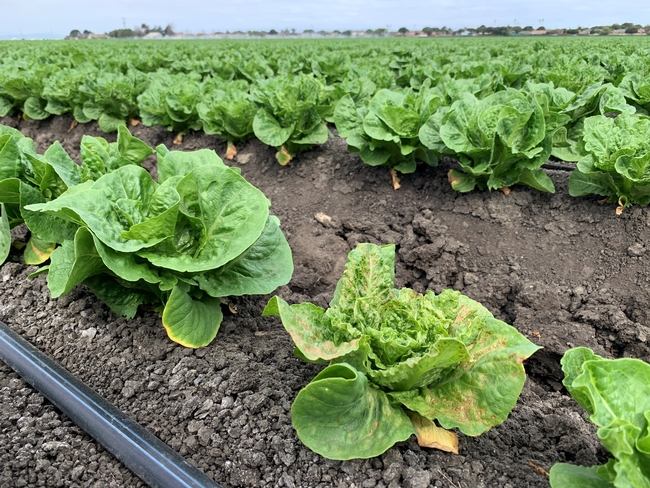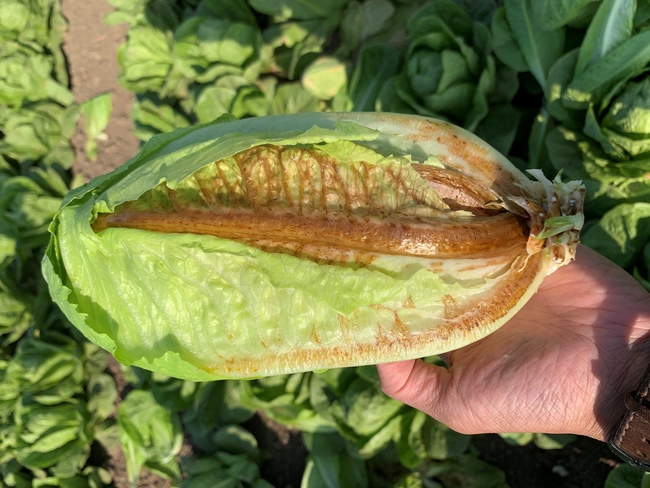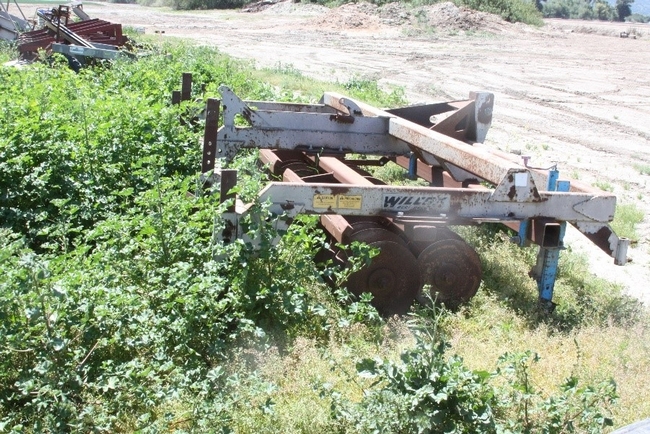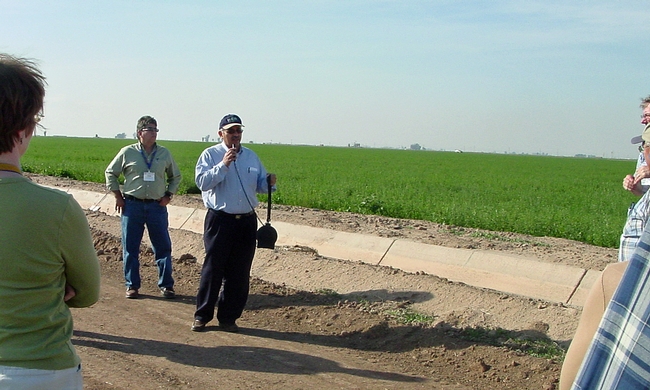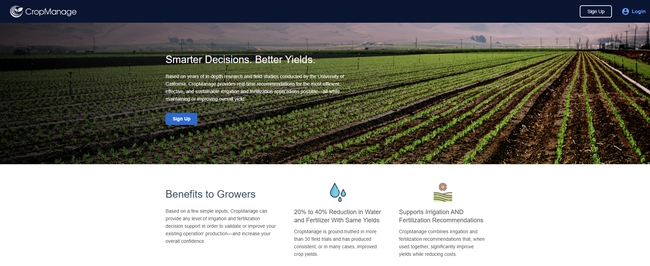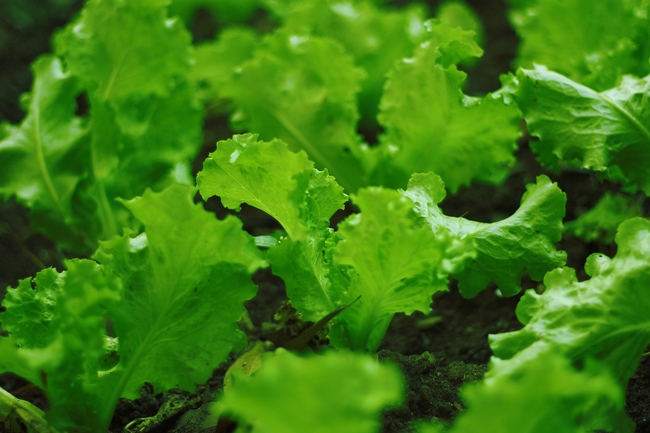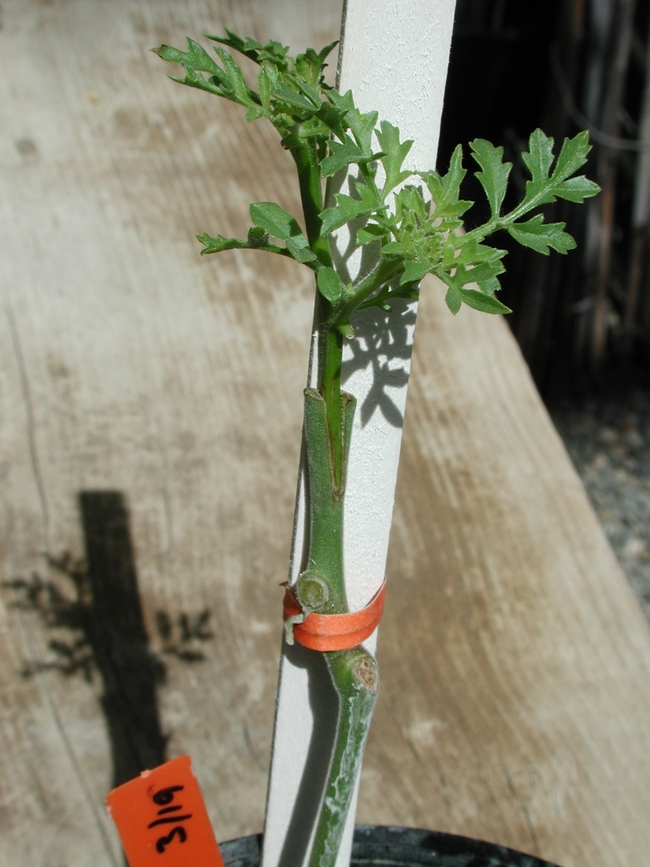
Posts Tagged: Vegetables
Evaluation of S-metolachlor and sulfentrazone in Brassica vegetable crops
Steve Fennimore is a Professor of Extension (Cooperative Extension Weed Specialist) at UC Davis. His office is located in Salinas, California. Small acreage Brassica vegetables need additional herbicide options. Among the vegetables grown in California are a number of niche crops such as...
Lettuce growers hope weeding, research can counter devastating plant virus
Population explosion of insect vector contributed to $100 million in losses in 2020
While most Californians are wholeheartedly embracing the wet start to winter, one group is welcoming the rain more warily (and wearily) – lettuce growers in the Salinas Valley.
“It's a blessing, yes, we need the water,” said Tony Alameda, managing partner of Topflavor Farms, which grows a variety of produce in Monterey and San Benito counties. “But, oh gosh: with that water, here come the weeds, here comes the habitat, here comes all the other problems that go along with it.”
Weeds are overwintering havens for a tiny insect called the Western flower thrips, which in turn carries the impatiens necrotic spot virus (INSV) – a plant virus that caused $100 million in lost gross revenue for Salinas Valley growers in 2020.
The agricultural community called it “the biggest problem we've seen in a long, long time,” said Mary Zischke, facilitator of a task force convened by the Grower-Shipper Association to address INSV and a related affliction, Pythium wilt.
Widespread crop failure in 2020
Since INSV was first observed in the state in 2006, the virus – which poses no threat to people – triggered significant crop losses in 2019, leading up to a catastrophic 2020. As Alameda's lettuces began to show the telltale “bronzing” of the leaves, efforts to bag up or remove the infected plants had no effect on the virus' implacable spread.
“Nothing seemed to work,” he recalled, “and you just watch those fields collapse, week after week, until you're just like, ‘Ugh, there's nothing here to even harvest.'”
After “100% crop failure” that year in his prime fields at the heart of the Salinas Valley, Alameda tried to dodge the virus in 2021 – shifting lettuce plantings to San Benito County and instead using his most valuable land for unaffected crops such as cilantro, leeks and radishes. By decamping to San Benito, Alameda was able to harvest 70% of his usual lettuce yield.
Generally, growers enjoyed a reprieve from virus pressures in 2021. Even in this “good” year, however, about one-third of all lettuce plantings in the Salinas Valley had at least a low level of infection, according to Zischke.
“Since we were attributing a lot of our so-called good fortune – on having less damage this year – to the cooler weather, we know we can't count on that to get us out of this problem,” Zischke said. “All the models point to the fact that we're in a warming climate, so we were fortunate this year.”
More research needed on thrips
Heat waves were a major driver of the INSV disaster of 2020. Although researchers have established a link between warmer temperatures and population increases of thrips, science still has a lot to learn about those disease vectors.
“Thrips are something we're trying to understand as much as we can, but it's pretty tough because they're a little mysterious in the way they get around and where they overwinter,” said Richard Smith, a University of California Cooperative Extension vegetable crops and weed science farm advisor for the Central Coast region.
Smith – along with U.S. Department of Agriculture research entomologist Daniel Hasegawa and California State University-Monterey Bay plant pathologist JP Dundore-Arias – provided an INSV update during an Assembly agriculture committee hearing in December.
Recent studies have identified several weeds as key “reservoirs” of thrips, including malva, marestail, and hairy fleabane. The ubiquitous mustards, fortunately, appear to be poor hosts for thrips, although their pollen serve as potential food sources.
Controlling those weeds – which are beginning to spring up as the days lengthen – is a top priority during the winter months, according to Smith. Aggressive weed management in the preceding winter was an important factor in limiting the virus' spread in 2021.
And because weeds recognize no boundaries, experts are also urging managers of non-agricultural lands to keep their properties as clean as possible, including industrial sites, equipment yards and the edges of roadways – namely U.S. Route 101, which runs through the center of the valley. Some growers have been volunteering to weed their neighbors' vineyards.
“We're encouraging everybody – as best they can – to knock down known weed hosts; that's really critical,” Zischke said.
Search for long-term solutions
Within the grower community, there is “nervous optimism” for the coming year, said Alameda, as he continues to hope for an innovation that would aid in the fight against INSV – whether a more targeted pesticide application or a beneficial insect that could deter the thrips.
However, both Alameda and Zischke pointed to the breeding of more resistant lettuce varieties as the ultimate solution to INSV – albeit one that is years away.
“We have a lot of different types of lettuce that we grow, so to move resistance into all the different types of lettuce we grow throughout the season … that's going to take time,” Zischke explained.
Research funding from the state and USDA – as well as projects supported by the California Leafy Greens Research Program – can help expedite that process. But, for Alameda, the INSV crisis underscores the need for more resources and farm advisors such as Smith, who has spent more than three decades cultivating relationships and building trust within Salinas Valley communities.
Alameda would like to see a renewed focus on bringing “bright, young, passionate people who live and breathe this stuff” to the region, so growers are better equipped to handle the inevitable next calamity.
“Hopefully this is a wakeup call to all,” he said. “This is a valued industry – you have to take care of it; it cannot be taken for granted. The ‘salad bowl of the world' cannot rest on its laurels.”
Herbicide screen in Brassica vegetables
Hello We have been evaluating several herbicides on direct-seed Brassica vegetables: Bok choi, broccoli raab, collard greens, mizuna, mustard greens and radish. We also have evaluated several herbicides in transplanted Brussels Sprouts and Kale. Most of these crops appear to be quite tolerant of...
2020.01 IR-4 bokchoi raab Report 012121
2020.02 IR-4 collards & mizuna report 012121
2020.03 IR-4 mustard green & radish report 012121
2020.04 .05 IR-4 Zeus Trans Brassica Report 012121
UC ANR to work with farmers to apply artificial intelligence technologies in the field
UC Agriculture and Natural Resources will receive $865,000 to help farmers in the Colorado River basin and the Salinas Valley integrate digital tools and artificial intelligence into their growing systems. The funds are part of a $10 million Sustainable Agricultural Systems grant from the USDA's National Institute of Food and Agriculture to improve the sustainability of the nation's food supply.
The intensive agricultural industry of the Colorado River basin – which includes the Palo Verde, Coachella and Imperial valleys in California; the Yuma Valley and other areas, such as Wellton-Mohawk Valley in Arizona – produces vegetables in the winter that are shipped across the country. Salinas Valley farms produce vegetables in the summer for markets throughout the nation.
“Vegetables are an essential part of a healthful diet. With this grant, NIFA is recognizing the role that California, Arizona and Colorado play in growing nutritious food for Americans,” said Khaled Bali, UC Cooperative Extension irrigation specialist. “The sustainability of these production systems into the future, particularly in light of challenges like climate change, increased drought and limited access to surface and groundwater, will require sophisticated technology.”
U.S. agriculture industry professionals are world leaders in the use of technology, including automation, drip irrigation, sensors and drones. “What's new is how you can now integrate technology into making decisions,” said Bali, who is leading the digital agriculture education and outreach aspect of the grant.
Bali said new farming tools work like smart thermostats in homes, which have sensors throughout the house and learn family patterns to make conditions perfectly comfortable throughout the day and night.
On the farm, instead of applying the same amount of water and fertilizer over hundreds of acres, sensors, valves and digital management allow small sectors to get treatments based on soil type, size of plants, pest pressure, salinity and disease management.
“This project will lay the foundation for a long-term shift to highly automated mechanized farm management systems – with full implementation likely decades in the future,” Bali said. “The precise application of inputs in agriculture will save water, reduce the percolation of fertilizer below plant roots, reduce the need for manual labor in the industry, increase yields and decrease expenditures, enhancing the industry's economic viability.”
Field demonstrations, training sessions, videos and handouts will bridge the gap between ongoing farming practices and academic and industry state-of-the-art digital technology. These activities are expected to increase the productivity and competitiveness of major crop growers.
The new project will expand the usage of a smartphone and website app called CropManage, a system developed in 2011 by Michael Cahn, UC Cooperative Extension advisor in Monterey, Santa Cruz and San Benito counties. CropManage allows farmers in the Salinas Valley to input information about their crops and soil, and then automatically receive recommendations about irrigation and fertilization needs that take into account weather conditions reported by the California Irrigation Management Information System (CIMIS), a network of automated weather stations managed by the California Department of Water Resources.
Currently, CropManage makes about 2,000 recommendations to Salinas Valley farmers each month during the growing season. The new funding will allow for the expansion of CropManage to help farmers manage salinity.
“To minimize salt toxicity to the crop, farmers may need to apply water to leach salinity below the root zone. But we don't want to leach nitrates,” Cahn said. “We want to decouple these processes and do the leaching when there are lower nitrogen levels in the system. Determining timing and water amount is something we will build into CropManage.”
The grant will also provide funding for new training and outreach that will enable more farmers to use the CropManage app.
The overarching $10 million grant awarded to UC Riverside is led by professor Elia Scudiero, an expert in soil, plant and water relationships. He and a team of UC Riverside scientists will develop artificial intelligence data needed for smart farming systems with new statistical and algebraic models that find repeated and generalizable patterns.
Another key piece of the effort will be supplying the agriculture industry with the next generation of growers, managers and scientists. Funds from the NIFA grant will establish a Digital Agriculture Fellowship program to recruit more than 50 data, environmental or agricultural science students over the next five years to develop and learn the technology. Internships with key commercial partners are also a feature of the program.
UCCE advisor speaks about vegetable grafting at neighboring university
Zheng Wang, vegetable crops advisor with UC Cooperative Extension in Stanislaus County, visited an ag class at Stanislaus State to discuss a state-of-the-art vegetable production practice that involves grafting, reported Alivah Stoeckl in Stan State News.
Grafting plants onto specially bred rootstocks is a practice that is common in tree crops. Grafting confers resistance to soil-borne diseases and pests, requiring less inputs and leading to sustainable crop productivity. It is now being used in some vegetable and fruit crops, such as tomatoes, eggplant, watermelon, cucumbers and cantaloupe.
“Grafting conveys a lot of merits in terms of disease resistance and yield maintenance. It enriches the production practices by introducing more variety. And by making impossible things become possible,” Wang said.
Vegetable grafting has been used since early 2000s, but to many agriculture students the idea was new, reported Stoeckl.
“We're moving forward and advancing with our food which I think is interesting because we used to be all natural and simple but now it's all scientific,” said senior agriculture major Madeline Morataya.

